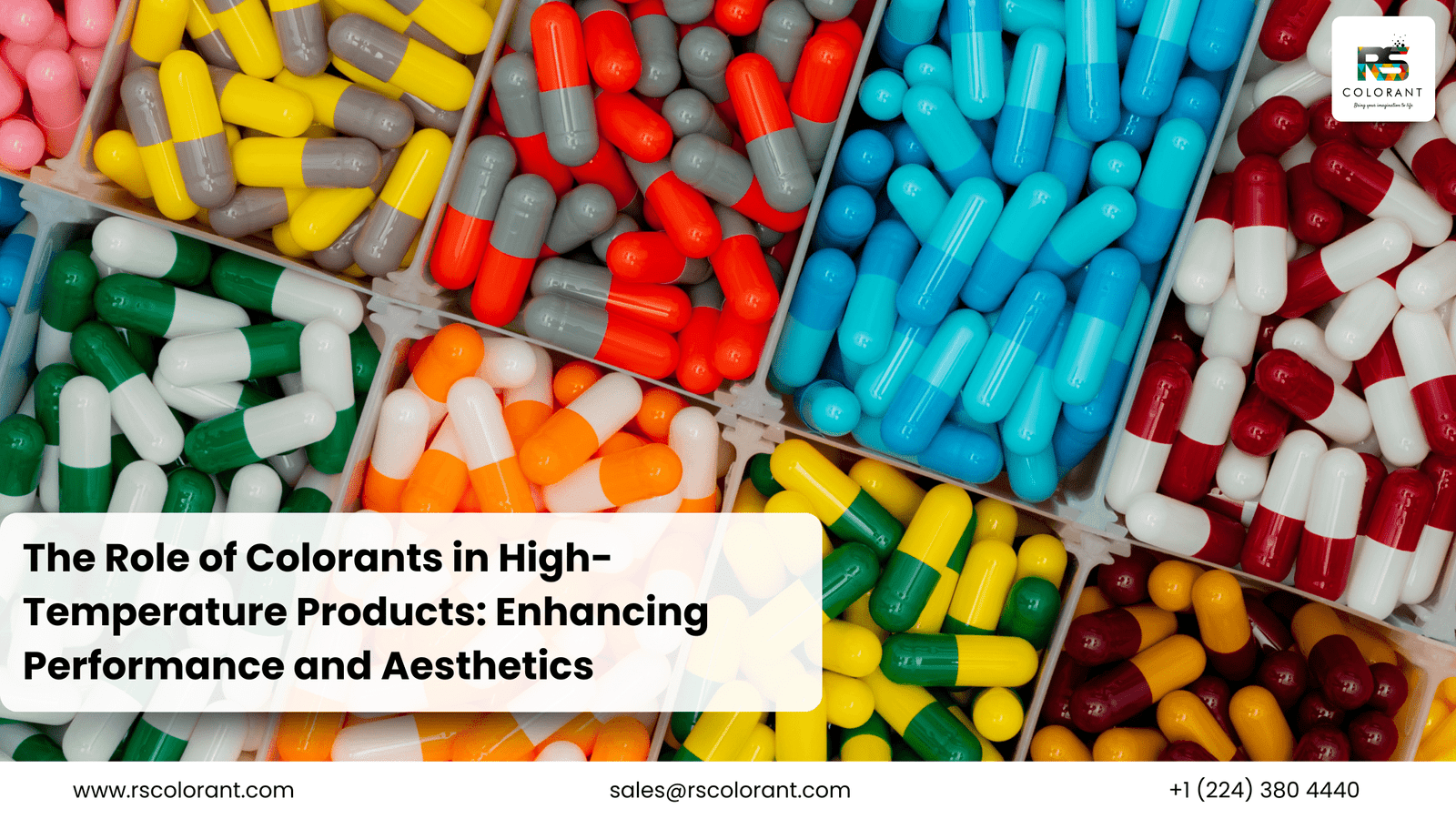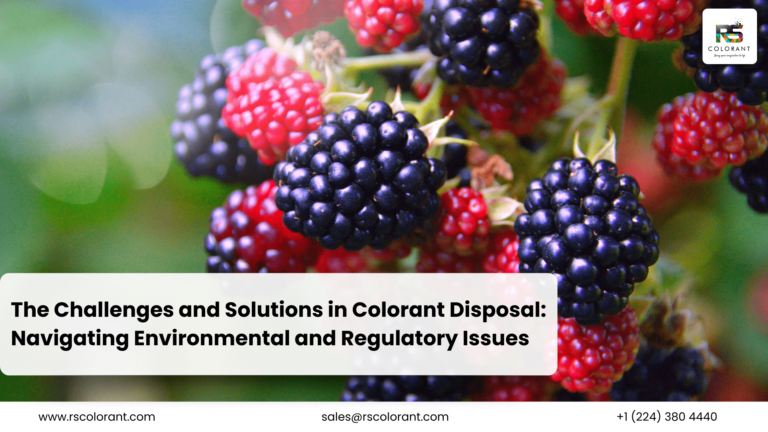Color plays a crucial role in our daily lives, influencing everything from fashion to interior design. But did you know that colorants are just as important in high-temperature products? These special pigments not only add aesthetic value but also play a vital role in the functionality of materials subjected to extreme conditions. Let’s dive deep into the fascinating world of colorants in high-temperature products.
Understanding Colorants
Types of Colorants
Colorants can be broadly classified into three types: inorganic pigments, organic pigments, and metallic pigments. Each type has its unique properties and applications.
How Colorants Work
Colorants work by absorbing and reflecting specific wavelengths of light, which determines the color we perceive. In high-temperature products, they must maintain their color and structural integrity despite extreme heat.
High-Temperature Products: An Overview
Types of High-Temperature Products
High-temperature products include anything that needs to withstand significant heat, such as automotive engine parts, aerospace components, industrial machinery, and even certain consumer goods like cookware.
Applications in Various Industries
These products are used across a wide range of industries. For instance, the automotive industry uses high-temperature colorants for engine parts, while the aerospace industry relies on them for aircraft components that endure extreme temperatures.
Why Color Matters in High-Temperature Products
Functional Reasons
Colorants in high-temperature products are not just for show. They can enhance visibility, indicate temperature changes, and even protect against UV radiation.
Aesthetic Reasons
Beyond functionality, colorants also provide an aesthetic appeal, which is particularly important in consumer goods and certain industrial applications where visual appearance matters.
Types of High-Temperature Colorants
Inorganic Pigments
These are highly stable and resistant to heat, making them ideal for high-temperature applications. Common examples include iron oxides and titanium dioxide.
Organic Pigments
While less heat-resistant than inorganic pigments, organic pigments offer a broader range of colors and are used in applications where extreme heat is not a primary concern.
Metallic Pigments
These pigments provide unique metallic finishes and are often used in automotive and aerospace applications to enhance both appearance and performance.
Properties of High-Temperature Colorants
Heat Resistance
The primary requirement for high-temperature colorants is their ability to withstand extreme heat without degrading.
Stability
These colorants must maintain their color and not react chemically with the materials they are mixed with, ensuring long-lasting performance.
Durability
High-temperature colorants need to be durable, resisting wear and tear from harsh environmental conditions.
Applications of Colorants in High-Temperature Products
Automotive Industry
In the automotive industry, colorants are used in engine parts, exhaust systems, and brake components to enhance performance and appearance.
Aerospace Industry
Aerospace applications include coating for aircraft engines and other components that must endure extreme temperatures and environmental conditions.
Industrial Manufacturing
Colorants in industrial manufacturing are used in machinery, tools, and equipment that are exposed to high heat during operation.
Consumer Goods
Even consumer goods like cookware and household appliances use high-temperature colorants to ensure they remain functional and aesthetically pleasing under heat.
Challenges in Using Colorants for High-Temperature Products
Color Degradation
One of the main challenges is ensuring that colorants do not degrade when exposed to high temperatures, which can affect the performance and appearance of the product.
Compatibility Issues
Some colorants may react with the base material, leading to compatibility issues that can compromise the integrity of the product.
Cost Implications
High-temperature colorants can be expensive, and manufacturers need to balance cost with performance to remain competitive.
Innovations in High-Temperature Colorants
Advances in Material Science
Recent advances in material science have led to the development of new high-temperature colorants that offer improved performance and stability.
Eco-Friendly Alternatives
There is a growing trend towards eco-friendly colorants that are not only heat-resistant but also have a lower environmental impact.
Enhanced Performance Colorants
New formulations are being developed that provide enhanced performance, such as greater UV resistance and better adhesion to various substrates.
Case Studies
Successful Use of Colorants in Automotive Coatings
In the automotive industry, certain high-performance coatings have been successfully applied to engine components, enhancing both durability and appearance.
Colorants in High-Temperature Plastic Components
High-temperature plastics used in industrial applications have benefited from colorants that maintain their integrity and color under extreme heat.
Future Trends
Emerging Technologies
Emerging technologies in nanomaterials and advanced polymers are expected to drive innovation in high-temperature colorants.
Market Growth Projections
The market for high-temperature colorants is projected to grow significantly, driven by increasing demand in various industries.
Environmental Impact
Sustainable Practices
Manufacturers are adopting sustainable practices in the production of high-temperature colorants, focusing on reducing waste and energy consumption.
Reducing Carbon Footprint
There is also a push towards reducing the carbon footprint of these colorants through the use of renewable resources and more efficient production processes.
Choosing the Right Colorant for Your Needs
Factors to Consider
When choosing a colorant for high-temperature applications, consider factors such as heat resistance, compatibility with the base material, and cost.
Tips for Selection
Look for colorants that have been tested and proven in similar applications, and consult with suppliers to find the best match for your specific needs.
Conclusion
Colorants play a vital role in the performance and aesthetics of high-temperature products. By understanding their properties and applications, manufacturers can make informed decisions to enhance the durability and appeal of their products. With ongoing innovations and a focus on sustainability, the future of high-temperature colorants looks bright.
FAQs
What are the most common colorants used in high-temperature products?
The most common colorants are inorganic pigments like iron oxides and titanium dioxide, which are known for their heat resistance.
How do colorants affect the performance of high-temperature products?
Colorants can enhance visibility, indicate temperature changes, and protect against UV radiation, all of which improve the performance of high-temperature products.
Are there any eco-friendly colorants for high-temperature applications?
Yes, there are eco-friendly colorants being developed that are both heat-resistant and have a lower environmental impact.
What industries benefit the most from high-temperature colorants?
Industries such as automotive, aerospace, industrial manufacturing, and consumer goods benefit significantly from high-temperature colorants.
How can I ensure the colorants I use are heat-resistant?
To ensure heat resistance, choose colorants that have been specifically tested and proven for high-temperature applications, and consult with suppliers for recommendations.




